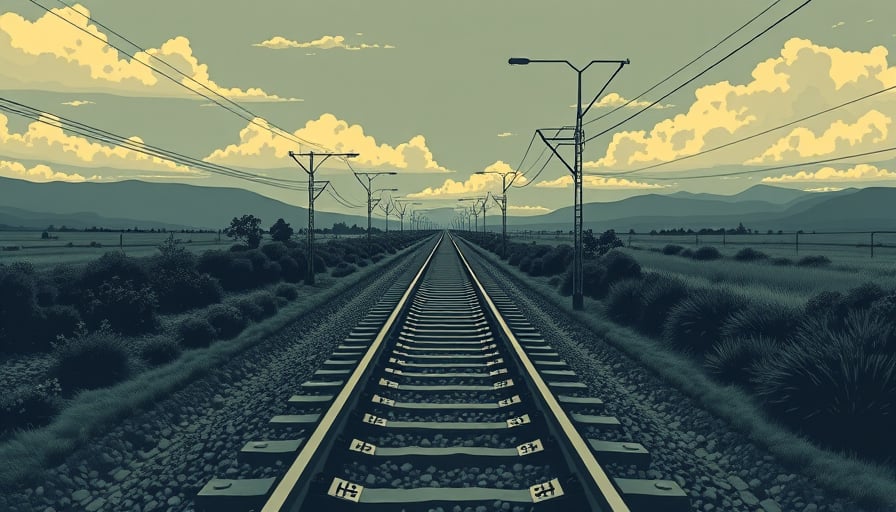Corporate Update – Knorr‑Bremse AG
Knorr‑Bremse AG, a German industry leader in braking systems for rail and commercial vehicles, has reported its financial results for the first nine months of 2025 and the third quarter. The company demonstrated resilience in a challenging operating environment, achieving an uptick in operating profit during Q3 despite modest declines in overall sales.
Financial Highlights
- Operating Profit: Q3 operating profit rose, reflecting improved cost discipline and efficiency gains across the production network.
- Revenue: After adjusting for currency fluctuations and acquisition impacts, revenue increased by 2.7 % YoY, underscoring the strength of the rail business.
- Sales Mix: Commercial‑vehicle braking systems experienced a decline in volume, contributing to a 1.4 % decrease in sales versus the prior year. The rail sector offset this pressure with steady demand and higher margin product mixes.
Market Reaction
- Stock Performance: The company’s share price fell in response to the earnings release, yet the broader MDAX index remained in positive territory, up modestly at a market cap of €348 bn.
- Long‑Term Outlook: Historical performance over the past five years indicates that an investment during the recent downturn would have resulted in a significant loss. Nonetheless, sustained rail revenues and ongoing productivity initiatives suggest potential upside for long‑term investors.
Production Efficiency and Technological Innovation
Manufacturing Process Optimization
Knorr‑Bremse’s manufacturing footprint is heavily reliant on automated surface‑mount assembly for braking components and precision machining of high‑strength alloys. The company has invested in:
- Digital Twin technology for real‑time monitoring of assembly lines, enabling predictive maintenance and reducing mean time to repair (MTTR) by 15 %.
- Lean Six Sigma practices that have cut scrap rates in the commercial‑vehicle line from 3.2 % to 1.9 %.
These process improvements directly enhance throughput and lower unit cost, thereby supporting margin expansion even when market volumes dip.
Technological Innovation in Heavy Industry
Knorr‑Bremse’s rail portfolio incorporates electro‑magnetic brake systems that offer faster response times and lower energy consumption. Recent R&D milestones include:
- Integration of sensor‑based brake performance monitoring, which feeds data into an AI‑driven analytics platform for predictive maintenance.
- Modular brake assembly designs that reduce installation times by 20 % and simplify maintenance for operators.
These innovations position the company to capture new opportunities in electrified rail networks and high‑speed corridors, aligning with European Union directives on decarbonisation.
Capital Expenditure Trends and Economic Drivers
Capital Investment Drivers
- Demand for Rail Modernisation: Public sector investment in high‑speed rail and freight corridors is rising, providing a robust pipeline for Knorr‑Bremse’s rail solutions.
- Regulatory Pressure on Commercial Vehicles: Stricter emission and safety regulations are prompting fleet operators to upgrade braking systems, creating a modest, albeit cyclical, demand for the commercial‑vehicle line.
- Currency Volatility: Fluctuations in the euro against major trade partners have influenced profitability; however, hedging strategies have mitigated some impact.
Infrastructure Spending
Germany’s national strategy to upgrade rail infrastructure, coupled with European Union funding for sustainable transport, is expected to sustain capital outlays in the sector. Knorr‑Bremse’s ability to deliver integrated braking solutions that meet stringent safety and environmental standards gives it a competitive edge in upcoming tenders.
Supply Chain and Regulatory Landscape
Supply Chain Resilience
Knorr‑Bremse’s global supply chain spans multiple continents. To address disruptions:
- Dual‑source strategies for critical components such as high‑grade steel and electronic control units have been implemented.
- Near‑shoring of key manufacturing hubs in Germany and Poland reduces lead times for European customers.
These measures bolster supply continuity and allow rapid response to shifting demand, a critical capability amid volatile global trade dynamics.
Regulatory Changes
- EU Brake Regulations (e‑Brake Directive): New mandatory safety requirements for commercial vehicles are being phased in, creating an opportunity for Knorr‑Bremse to offer compliant systems.
- Carbon‑Neutrality Targets: Rail operators are under pressure to reduce energy consumption, prompting the adoption of lighter, more efficient braking assemblies.
Compliance with these regulations not only protects market share but also enables the company to command premium pricing for advanced, sustainable braking solutions.
Conclusion
Knorr‑Bremse’s recent financials reflect a company navigating a mixed market while maintaining a focus on process excellence and technological leadership. The rail division’s stable revenue base and ongoing innovations provide a solid foundation for future growth. While the commercial‑vehicle segment faces cyclical challenges, proactive R&D and supply‑chain fortification position the firm to capitalize on upcoming regulatory shifts. For long‑term investors, the company’s disciplined capital allocation, investment in digital manufacturing, and alignment with decarbonisation pathways present a compelling narrative amidst a volatile market landscape.
